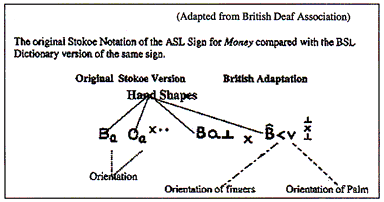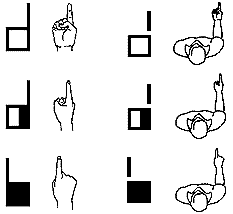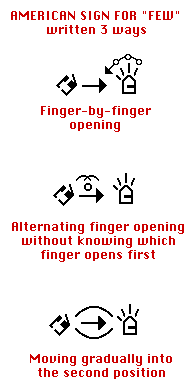Two Notation Systems for Signed Languages: Stokoe Notation & Sutton SignWriting Joe Martin Western Washington University Martinj4@cc.wwu.edu |
|||||||||||||
|
COMPARISON continued... 4. Orientation
In SSW, Orientation has three parts. Taking advantage of the fact that the back of one's hand is darker than the palm, coloring in the back of the hand symbol indicates which way the palm faces. The other part of orientation, that of the arm's alignment, SSW handles in a completely different arbitrary way, by leaving a small gap in the symbol whenever the arm is aligned parallel to the floor (Figure 11b).
The Cree syllabary, another partly featural script, uses the orientation of its letters to represent vowels (Campbell 41), but SSW takes this idea even further. It points its Hand Shapes in the direction dictated by the grammar, just as the signed languages themselves do, and thereby solves the difficult problem of how to write signed pronouns (Figure 11d).
|
|||||||||||||
|







